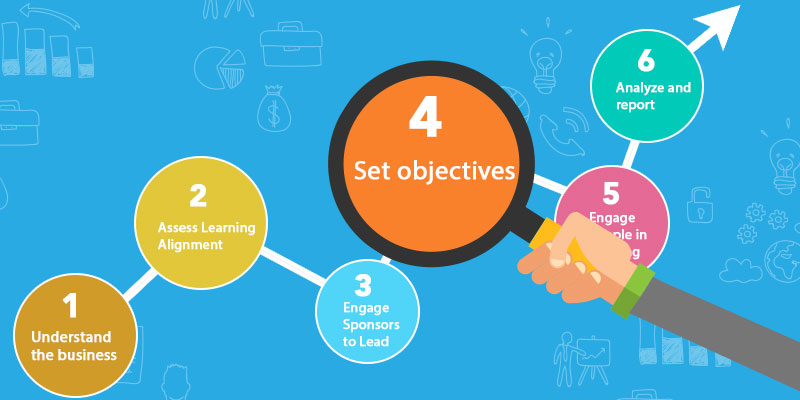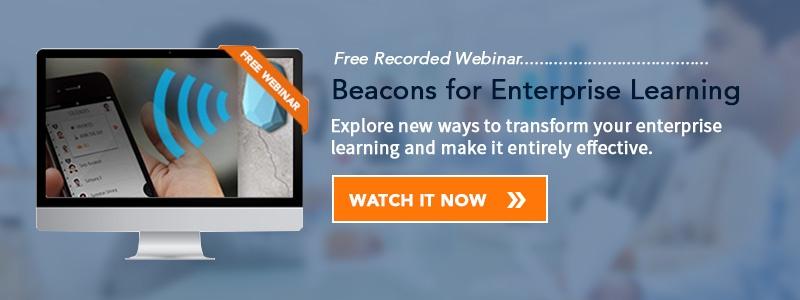
This article is the fifth in a seven-part series on becoming a strategic partner by aligning learning and development with business objectives. In the previous article, we explained how to work with business leaders to assess their needs and gain their sponsorship of learning programs.

An essential activity in any project is setting objectives. We want to get a clear picture of our purpose and how we will measure success. Objectives will also keep us focused on what we need to accomplish.
You and your sponsor define objectives to predict the impact your activities will have. Before we discuss setting goals, let us review the analytical tools available to learning practitioners.
Analytics Maturity Model
The tools you use to monitor and report your results will depend where you are in the Analytics Maturity Model . We have entered a new age of analytics in which automation and integration of talent management processes produce vast amounts of data. Until recently, turning the data into predictive intelligence has been a difficult and expensive endeavor, but technology has made analytics available to organizations of any size.

When we met Jac Fitz-Enz, the father of HR analytics, about 30 years ago, he was encouraging us to learn how to capture information and analyze workforce trends. We needed to do this, he explained, to show how HR adds value to the business. We have grown beyond descriptive analytics (what happened) to the predictive analytics we are using today. He is now encouraging us to use prescriptive analytics to help us make the right decisions. We expect that prescriptive analytics and decision support will soon find their way into the mainstream of HR analytics.
You don’t need advanced analytics to work through our six steps to a strategic business partnership. You can use simple spreadsheets. If you do have analytics capability, we recommend you use it to design and replicate your data collection and metrics. 
If you need help with the data collection, analysis, or reporting, you have several options:
- Contact an analytics consultant (like us).
- Contact your IT department for help.
- Become a member of the Center for Talent Reporting. Membership is not expensive, and you get all the tools and resources you need to manage your analysis reporting.
- Hire an expert (scarce in today’s labor market).
Setting Objectives
Use the worksheet you created to estimate your project’s impact on the sponsor’s objectives or goals. Your sponsor will have metrics for most objectives, and you can agree on the portion attributable to the learning intervention.
|
Figure 3: Setting Objectives |
||||||
|
Priority |
Goal |
Sponsor |
Course |
Target Audience |
# of Participants |
Impact on Goal |
|
High |
Increase sales by 12% |
Doe |
Use case analysis |
Sales |
120 |
3% |
|
High |
Reduce order errors by 15% |
Doe |
Order processing |
Sales |
120 |
3% |
|
Medium |
Improve customer satisfaction score to 97 |
Doe |
Setting expectations |
Sales |
120 |
1.8 |
Next Steps
Agree on and document the high-level project timeline with a completion date for each phase of the project. The timeline will form the backbone of the detailed project plan you will create and provide to the sponsor for approval.
In the next installment, we will discuss the design approach. We also will explain why most people need to learn how to learn, and how advances in technology and instructional design are raising engagement levels.
References
Gartner, 2013. Cited in: Puget, Jean Francois. "The Analytics Maturity Model." IBM. March 24, 2014. Accessed December 19, 2015.
Fitz-Enz, Jac, and John Mattox. Predictive Analytics for Human Resources. Hoboken, New Jersey: Wiley & Sons, 2014.
PhenomᵉCloud is a full-service technology company dedicated to helping clients solve business problems, improve the capability of their people, and achieve better results.


Leave a Comment